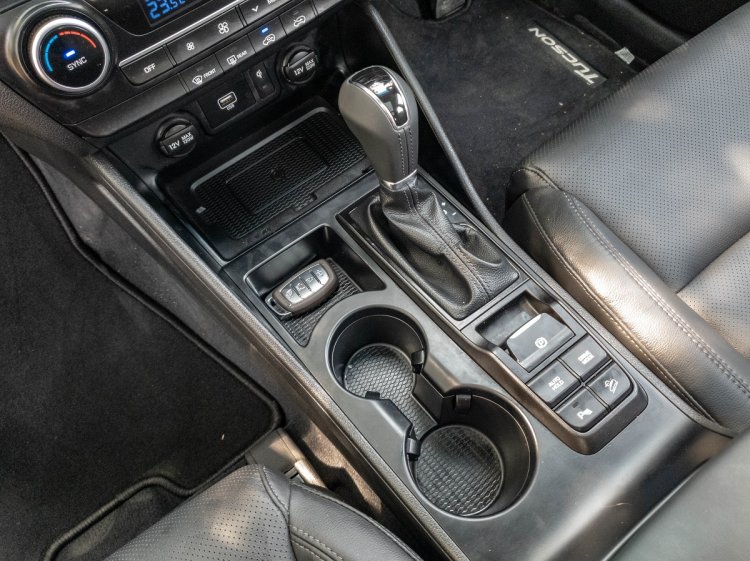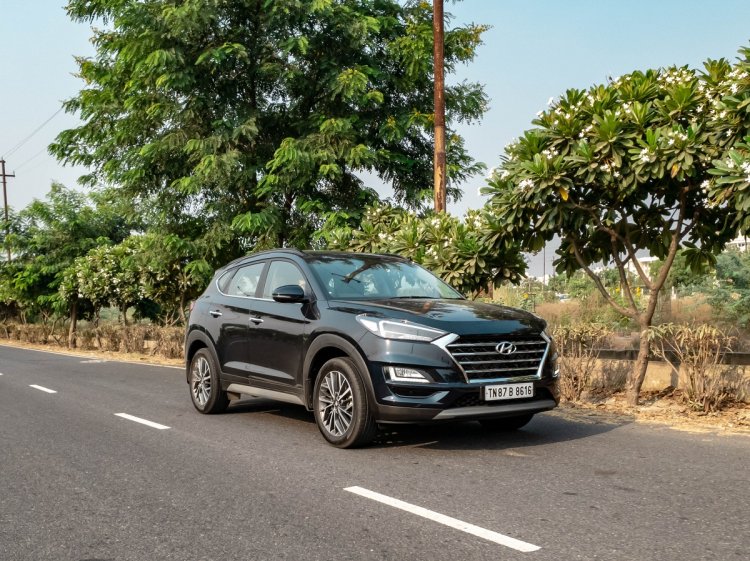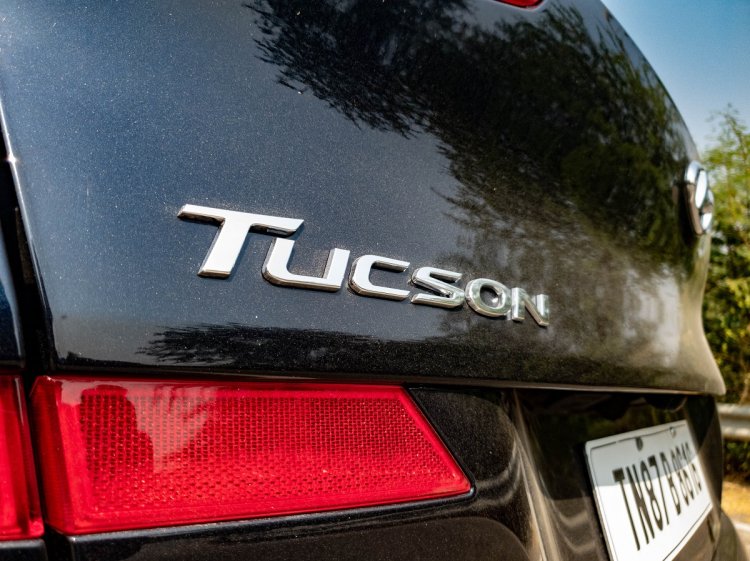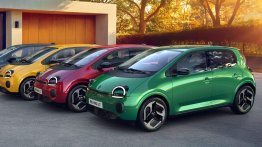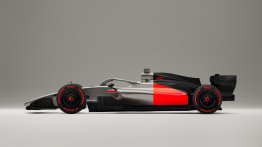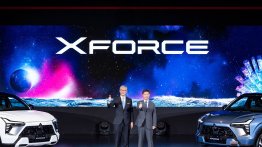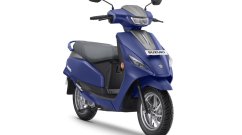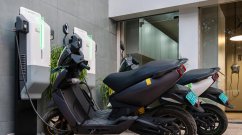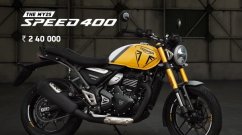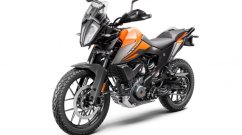The Hyundai Tucson was launched for the first time in the country in 2005. Unfortunately, the carmaker had to scrap any plans of making profits with the Tucson, as the response that it received from the Indian audience was dull. In 2016, Hyundai studied the market again and launched the third-generation of Tucson in India. Interestingly, it received over 200 bookings in the first month itself. Impressed with its performance on the sales tally, South-Korean carmaker gave it a mid-cycle update earlier this year. Talking about its target audience, top honchos of Hyundai are expecting existing Creta owners to upgrade to the new 2020 Tucson facelift. But the question that remains unanswered is if the Tucson in its facelifted avatar is actually the perfect upgrade to the Creta? Let’s find out in this review.
2020 Hyundai Tucson Facelift Review – Exterior
In the updated iteration, the Hyundai Tucson has been invigorated with a few changes. The upgrades are subtle, letting the Tucson preserve its sporty stance and athletic silhouette. On the front facet, the Tucson now features a larger cascading grille. It looks sharper than the one seen on the pre-facelift model, and so do the LED headlamps. While the overall shape of the headlamps remains the same, they are now comprised of five LED projectors and LED DRLs. The fog lamps housings are redesigned as well to fit in another LED DRL. Lending the Tucson’s face with a meaner presence are some tight creases on the bonnet and a silver scuff plate on the bumper.
In the side profile, the most notable change on the new Tucson are the newly-designed diamond-cut alloy wheels, which measure 18 inches in diameter. However, this isn’t the only change here. The roof rails now don a piano-black finish as well but everything else remains identical.
Coming to the rear, this particular facet features a lot of changes in comparison to the front and side profile of the car. The split tailgate is gone, replaced by a single-piece hatch instead. Also, the tail lamps are now revised units with a different glow pattern. The bumper is new too. The reflectors are now housed a little higher and the skid plate is sleeker than before. All of these changes help the Tucson adopt a cleaner-looking rear profile.
On the whole, the changes that the Tucson gets with the facelift are modest but significant enough to make it look fresher and crispier in comparison. Since it measures 4,480 mm in length, 1,850 mm wide and stands 1,660 mm tall, it is safe to say that the 2020 Tucson continues to uphold its imposing road presence.
2020 Hyundai Tucson Facelift Review – Interior
Generally, in mid-cycle updates, the interior is often left unattended. However, that isn’t the case with the Tucson facelift. Hyundai has revamped the cabin of the Tucson facelift to bring in some cohesion with its updated exterior. There are two major changes here. First, the Tucson facelift now gets an all-black theme for the interior and second, the dashboard layout is a revised affair. The black-themed interior on the Tucson looks premium but it does take away from the element of airiness. Thankfully, there’s a large panoramic sunroof here, which helps light up the cabin to quite an extent.
Talking of the updated dashboard, it now features an 8-inch floating-type touchscreen display for the infotainment unit. In order to move the positioning of the touchscreen to the top of the dashboard, the AC vents have been moved down. The new infotainment display offers Android Auto & Apple CarPlay compatibility, and comes paired to an 8-speaker Infinity sound system. Sadly, it is the Creta’s Bose-sourced unit that feels better.
The space inside the Tucson facelift is impressive. The front seats are supportive and electronically adjustable. They also offer a lot of legroom, shoulder room and headroom. However, the second-row seats are best suited for two occupants. Seating three abreast is a tight squeeze. From the second row, the Tucson facelift feels narrow, and there’s a big transmission tunnel at the rear that eats up some space in the foot-well. Hyundai has also skimped out on rear-seat sun-blinds, which are available in the more-affordable Creta. Nevertheless, it comes with 3-point seatbelts for the middle-seat occupant of the second-row. Also, the backrest can be inclined to generous angles.
The trunk volume on the Tucson facelift measures 513 litres. The boot is deep, wide and can easily accommodate luggage for four occupants for weekend road trips. There’s a parcel shelf as well, which can be adjusted to three positions. You can also find a 220v power socket in the boot. Moreover, there are numerous storage spaces inside the cabin. The door bins are large enough to house a one-litre bottle, there are two cup holders in the front centre-console and the rear-seat armrest. The front armrest gets a deep cubbyhole as well.
In terms of features, the Tucson facelift gets all sorts of bells and whistles. The list includes dual-zone climate control, cooled glovebox, wireless phone charger, auto-dimming IRVM, automatic headlamps/windshield wipers, powered tailgate with hands-free function, Hyundai’s BlueLink connected tech, puddle lamps, heated ORVMs, and rear ac vents. On the safety front, the Tucson comes fitted with six airbags, electronic stability control, traction control, ABS with EBD, electronic parking brake with auto-hold function, hill-start control, tyre pressure monitoring system, front & rear parking sensors, rear parking camera with dynamic guidelines and more. Overall, the cabin of the Tucson facelift is a definite upgrade over the Creta’s in terms of features and quality. However, it does miss out on rear sun-blinds and ventilated front seats.
Hyundai Tucson Facelift Review – Engine & Gearbox
Hyundai is offering the Tucson facelift with two engine-gearbox choices – a 2.0-litre petrol with 6-speed AT and a 2.0-litre diesel with 8-speed AT. The former produces 152 PS and 192 Nm of torque; on the other hand, the latter develops 185 PS against 400 Nm. The diesel-automatic combination is also available with the optional AWD layout. Interestingly, our test car was equipped with this very engine-gearbox configuration. The 8-speed automatic gearbox here is a new unit, and it replaces the 6-speeder seen on the pre-facelift model.
The oil burner here is exceptionally silent. At idle, there’s hardly anything that can be heard inside the cabin. The rev counter is the only way to check if it’s running and it is only after the 2,000 rpm mark that some engine noise creeps into the cabin. Talking of its drivability, it is very peppy. However, the turbo-lag is evident below the 1,500 rpm mark. The turbocharger takes a little time to spool up but once it does, the Tucson facelift awards you with the full might of its 400 Nm of torque. In simpler words, the pull is quite strong. The engine packs a mighty low-end punch to let this big SUV potter around city roads easily.
The 8-speed automatic gearbox is blissful to operate. It is quite fast at shifting gears. Although, not as quick as a dual-clutch unit. It can even skip a gear or two while upshifting and downshifting. There’s sport mode as well, where the driver can take over control of the gearbox. All that needs to be done is to push the stick up or down to shift the gears. However, we feel steering-mounted paddle shifters would’ve made the job easier and much more engaging.
In comparison to the old 6-speed AT, this new 8-speed unit with the oil burner is superior in almost every aspect. This engine-gearbox combination makes the Tucson facelift immensely capable pondering around town or even cruising down the highways. Triple-digit speeds can be achieved and held for vast amounts of time without a hint of despair.
2020 Hyundai Tucson Facelift Review – Ride & Handling
The Tucson facelift rides on McPherson struts with coil-overs at the front and a multi-link setup with coil springs at the rear. While these aren’t the most advance suspension components available in this segment but they are apt at offering a plush and planted ride. The Tucson facelift is undeniably the best-riding Hyundai currently on sale in the country. The suspension is capable of absorbing bumps with a thud, without disturbing the overall composure and poise of the ride.
Massive bumps, however, are required to be addressed with patience. At high speeds, it feels planted, and at low speeds, the suspension soaks up bumps without making it a jittery affair. The body roll in the Tucson facelift is noticeable, but still well contained. The steering response in the new Tucson is one of the nicest that we’ve come across in an Indian-spec Hyundai. It does not feel vague and gains weight with speeds but at the same time, is light at low speeds. Making tight parking manoeuvres with this steering will not be an issue for anyone, regardless of their build. The steering and suspension components make the Tucson facelift a fun car to drive. It can split lanes and take on the twisties without scaring the driver or other passengers.
Hyundai has shod the Tucson facelift with disc brakes at all four corners. The braking setup is progressive and has a strong initial bite. However, the pedal does lack some much-needed feedback. The Tucson facelift rides on a set of 225/55/R18 tyres, sourced from Nexen. While the brand is not renowned in the country, these tyres offer a lot of grip in both dry and wet conditions. Push too hard though and they do start complaining. Off the road, however, they lack the traction required to take on any serious obstacles. While AWD system does provide better grip and safety in low-traction situations, limited wheel articulation and the absence of a low-range transfer case restrict its capabilities furthermore.
2020 Hyundai Tucson Facelift Review – Verdict
Also Read - 2020 Hyundai Creta bookings surpass 1.15 lakh since its launch in March
The Hyundai Tucson facelift retails at a starting price of INR 22.30 lakh. Therefore, making it the most expensive Hyundai car on sale in the country. The AWD trim that we drove is priced at INR 27.03 lakh. To justify its price tag, it boasts of a healthy road presence and comes packed with features. Apart from the absence of rear-window sunblinds and ventilated front seats, Tucson facelift has all the bells and whistles in its cabin along with a premium ambience. To top it off, it looks gorgeous outside as well. While its not a mechanical revolution over the previous iteration, the new 8-speed AT does have a different charm altogether. Along with that, the AWD system is competent enough to pull the car through mild off-road conditions. In summation, the Tucson facelift ticks all the right boxes to emerge as a worthy upgrade for existing Creta (and its rivals’) owners.









